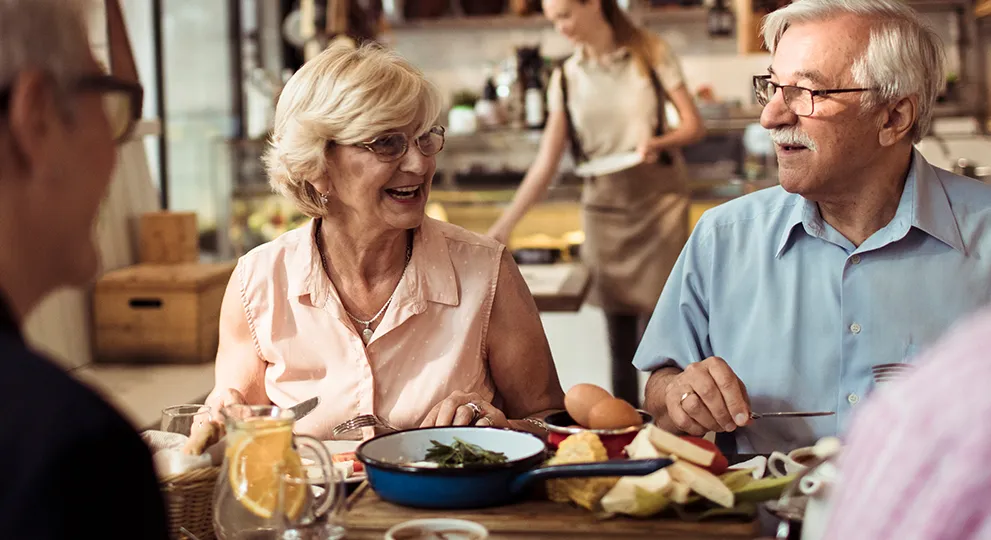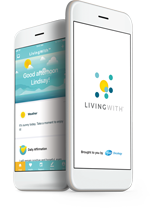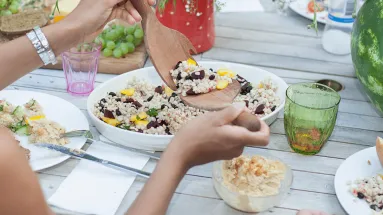Going out to eat? Learn how to make smarter choices
Going out to eat? Learn how to make smarter choices

People with cancer can have ongoing symptoms like nausea, mouth sores or changes in appetite or taste that can be related to cancer and its treatment. These symptoms can make it hard to enjoy some of the foods you normally eat. In addition, people with cancer can be prone to infection, including infection from undercooked and unsafe foods.
These issues can make it challenging to dine out at a restaurant or attend a family or other social gathering that involves food. There are some steps you can take, however, to help you prepare for and make the most of events that involve food, while also keeping food safety in mind.
Plan ahead and communicate your needs
By planning ahead and communicating your needs, you can make sure that you have foods to choose from that will be appropriate for you.
Attending a social gathering
- Before the event, let family or friends know about your special needs so they can have foods available that you can tolerate
- Bring your own foods that you know you can tolerate as a backup, in case you cannot find something suitable to eat
- Bring small snacks and meals that travel easily, such as granola bars, trail mix, sandwiches, wraps and pasta dishes
- Be aware of how food is served. Don’t eat any foods that haven’t been kept at the right temperature. For example, bowls of mayonnaise-based salads kept outdoors should be over ice and grilled chicken and burgers shouldn’t be left outside for more than an hour in warm weather. When in doubt, it’s best to avoid buffets and food that you think may not have been prepared or stored safely
Eating out
- Bring an index card or piece of paper with a list of the foods you are not able to tolerate. For example, if you have nausea, your list may include fried foods, spicy foods, high-fat foods and strong-smelling foods like fish, eggs and strong spices
- If possible, choose a restaurant where you’ve eaten before and are comfortable with the menu and the surroundings
- Don’t be afraid to speak up. Ask your server about the ingredients and how the food on the menu is prepared so that you can see which menu items would be best for you
- Ask your server to help with your special needs. For example, you can ask to have your chicken baked or broiled, rather than fried, or to have cheese left out of a dish to make it lower in fat
- Be cautious about buffets at restaurants. Buffets can easily be contaminated by other people touching the food or possibly coughing or sneezing near it. Also, if buffet food isn’t kept at the proper temperature, it can grow bacteria that can make you sick
Avoid high-risk foods that may carry harmful bacteria
- Cold hot dogs and deli meats
- Undercooked meats, poultry and eggs
- Undercooked seafood such as sushi and ceviche
- Soft, unpasteurized cheese
- Unpasteurized or raw milk
- Unwashed fruits and vegetables
- Raw sprouts (such as alfalfa and bean sprouts)
|
MY CHECKLIST FOR EATING OUT AND SOCIAL GATHERINGS |
|
¨ Eat at restaurants where you feel comfortable and where the waitstaff will take the time to address your food needs. Plan ahead and bring a list of foods you can and cannot eat. |
|
¨ Tell your family and friends which foods you can and cannot eat so they can plan to have foods you can tolerate. |
|
¨ Bring your own snacks and meals to restaurants and social gatherings when you’re concerned that you won’t find foods there that you can eat. |
|
¨ Be aware of food safety and avoid high-risk foods when eating out and attending social gatherings and outdoor BBQs. |
|
¨ Choose nutritious options when dining at restaurants. |
Suggestions for healthy and tolerable dining options
While planning ahead can help relieve the stress of having meals outside of your home, it may still be hard to know what to choose. This can be especially hard if you have symptoms that bother your digestive system like nausea, vomiting, diarrhea, indigestion, or gas and bloating. This chart will give you ideas for healthier, more tolerable foods to choose, as well as foods to avoid.
|
SMART MENU CHOICES |
|
|
HIGHER RISK |
LOWER RISK |
|
✘ Soft cheese made from unpasteurized (raw) milk |
✓ Hard or processed cheeses. Soft cheeses only if they are made from pasteurized milk |
|
✘ Refrigerated smoked seafood and raw or undercooked seafood |
✓ Fully cooked fish or seafood |
|
✘ Cold or improperly heated hot dogs |
✓ Hot dogs reheated to steaming hot. If the hot dogs are served cold or lukewarm, ask to have them reheated until steaming, or else choose something else |
|
✘ Sandwiches with cold deli or luncheon meat |
✓ Grilled sandwiches in which the meat or poultry is heated until steaming |
|
✘ Raw or undercooked fish, such as sashimi, non-vegetarian sushi or ceviche |
✓ Fully cooked fish that is firm and flaky |
|
✘ Soft-boiled or “over-easy” eggs, as the yolks are not fully cooked |
✓ Fully cooked eggs with firm yolk and whites |
|
✘ Salads, wraps or sandwiches containing raw (uncooked) or lightly cooked sprouts |
✓ Salads, wraps or sandwiches containing cooked sprouts |
This information comes from “Food Safety for People With Cancer” Guide from the Food and Drug Administration. Read more at https://www.fda.gov/media/83710/download.
This article has general information and is not meant to replace nutritional or health guidance that is specific to any individual. Speak to your healthcare provider before making any changes to your diet or lifestyle. Consult with a registered dietitian if you are on a restricted or modified diet.













